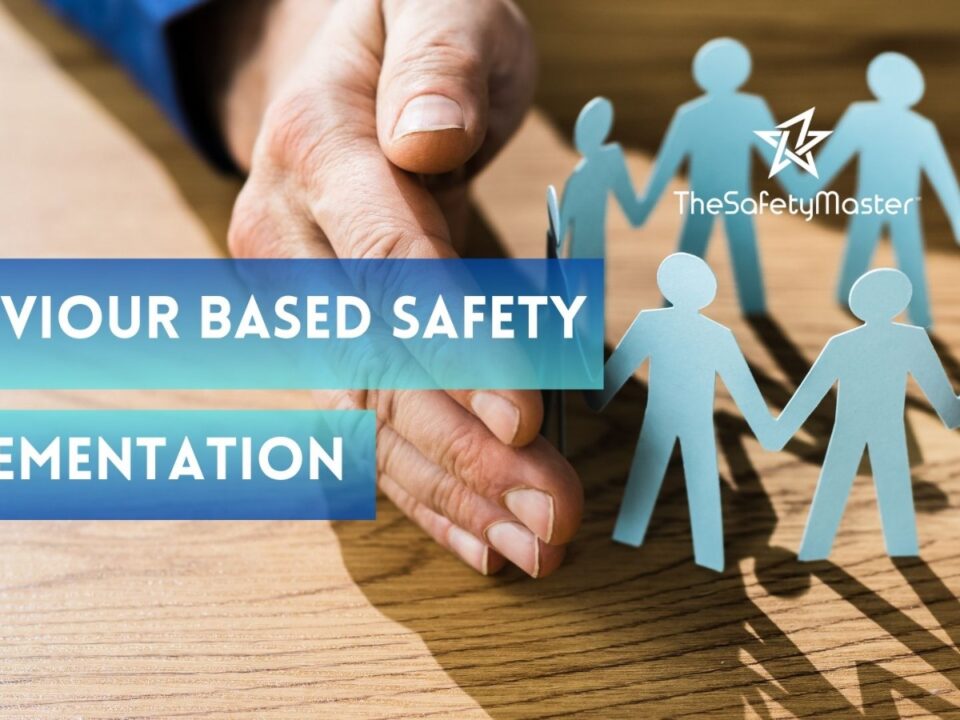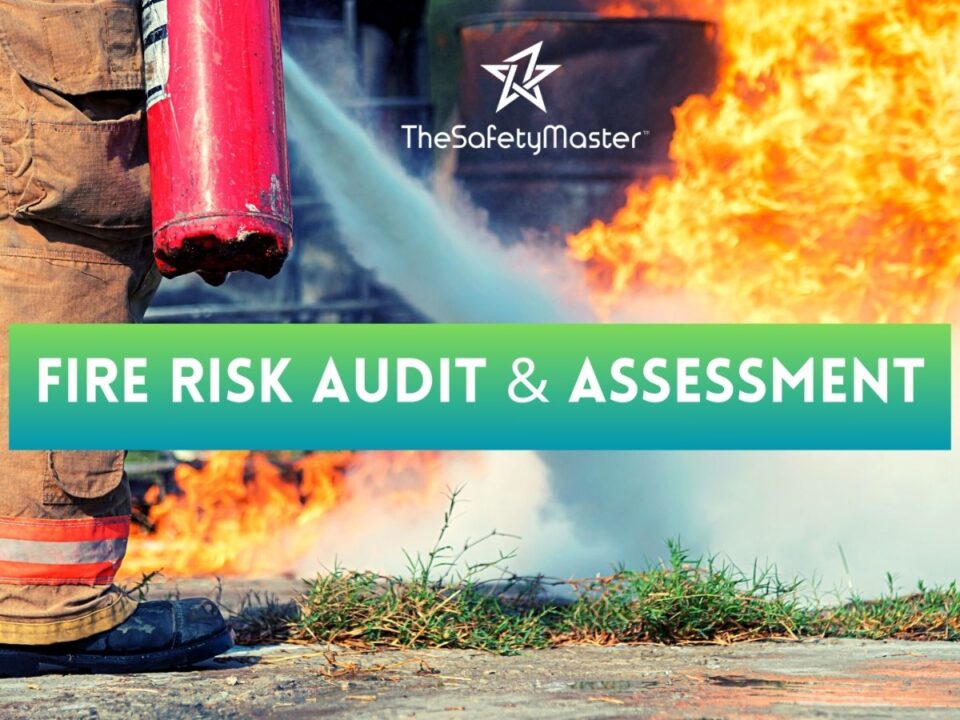The Power of Behavior Based Safety: Creating a Culture of Prevention

Importance for electrical safety in industries
May 4, 2023
The Importance of Fire Risk Assessments for Business Owners Fire Safety Audit
May 5, 2023The Power of Behavior Based Safety: Creating a Culture of Prevention
In this article, we delve into the world of behavior-based safety and explore its power in creating a culture of prevention. We will explore the challenges and benefits of implementing a behavior-based safety program in your workplace and provide insights into how to get employees on board. Expect to learn about the key components of a successful behavior-based safety program and how it can lead to improved safety outcomes and increased productivity. By the end of this article, you’ll have a deeper understanding of how behavior-based safety can transform your workplace into a safer, more proactive environment.
Introduction
Creating a safe and healthy workplace environment is crucial for any organization to achieve success. A single workplace accident can have severe financial and human consequences, such as lost productivity, higher insurance premiums, medical expenses, and decreased employee morale. But how can you prevent accidents from happening and ensure the safety of your employees? The answer lies in behavior-based safety (BBS) – a proactive approach that focuses on identifying and correcting unsafe behaviors before they lead to accidents. In this blog post, we will discuss the power of behavior-based safety and how it can help you create a culture of prevention in your organization. You can also expect to learn about the benefits of BBS, its four-step process, and how to implement BBS effectively in your workplace. By the end of this blog, you will be equipped with the knowledge and tools to take a proactive stance towards safety and create a safer and healthier work environment for your employees.
What is Behavior Based Safety?
Behavior-Based Safety (BBS) is a proactive approach to workplace safety that focuses on identifying and eliminating hazardous behaviors in the workplace. It operates on the principle that at-risk behaviors can be prevented before they lead to injuries or accidents. BBS programs emphasize the importance of behavior modification over other safety measures, such as protective equipment or engineering controls. Such programs seek to change employee behavior patterns and make them aware of the potential hazards that exist in the workplace. By monitoring and measuring behavioral performance, BBS programs aim to achieve a stronger safety culture that emphasizes prevention rather than reactive measures. The long-term goal is to create a workplace where employees feel safe, remain productive, and produce quality work. BBS programs have been successfully implemented across various industries, allowing organizations to take a proactive approach to safety rather than the reactive methods of the past.
The Benefits of Implementing Behavior Based Safety
Implementing a behavior-based safety program can bring numerous benefits to an organization. First and foremost, it can help reduce incidents of workplace injuries and illnesses. By focusing on identifying and mitigating at-risk behaviors, employees become more mindful of their actions and are more likely to take steps to prevent accidents from happening. This leads to fewer lost workdays, lower worker’s compensation costs, and ultimately, a more productive workforce.In addition, behavior-based safety programs promote a culture of safety and accountability. Employees are encouraged to take ownership of their safety and look out for their colleagues. This creates a positive work environment where safety is a top priority, and everyone is working together to achieve a common goal.
Another benefit of behavior-based safety is that it can help organizations identify opportunities for improvement. By analyzing the data collected through the program, companies can identify patterns and trends in unsafe behavior and take proactive steps to prevent them from becoming accidents.
Overall, implementing a behavior-based safety program can have a significant positive impact on both employee safety and the bottom line. By promoting a culture of prevention and accountability, companies can create a safer and more efficient workplace.
Key Principles of a Behavior Based Safety Program
A successful Behavior-Based Safety program follows a set of principles that guide its implementation. These key principles include identifying hazardous behaviors and promoting safe behaviors, encouraging employee involvement in safety initiatives, providing regular training on safety best practices, and creating a culture of safety awareness.Effective Behavior-Based Safety programs also employ a proactive approach to safety, actively seeking out potential hazards and addressing them before an accident occurs. This approach requires a commitment to continuous improvement and a willingness to adapt to changing circumstances.
A culture of open communication is also essential to the success of a Behavior-Based Safety program. Employees must feel comfortable reporting safety concerns and suggestions, and leadership must be willing to listen and act on this feedback.
By incorporating these key principles into their safety programs, organizations can create a culture of safety that reduces accidents and injuries while improving employee morale and productivity.
Building a Safety Culture of Prevention through Behavior Based Safety
Building a culture of prevention through behavior-based safety involves creating an environment where employees prioritize safety as a core value. It’s not enough to simply follow safety rules and regulations; instead, safety should be integrated into the company culture and workplace behaviors. This requires a proactive approach to safety, where employees are encouraged to identify potential hazards and take steps to prevent accidents or injuries before they occur. It also means providing sufficient training and resources, such as personal protective equipment, to ensure that employees have the tools they need to work safely.
A good example of this is seen in the oil and gas industry, where safety culture is ingrained in the daily routine of workers. They follow a rigorous set of safety protocols and procedures, which has led to a significant decline in accidents and fatalities in recent years.
Through behavior-based safety, employees become more engaged and invested in safety, leading to a reduction in workplace incidents and injuries. This shift also results in cost savings, as fewer accidents mean lower worker’s compensation premiums and increased productivity.
By prioritizing safety as a fundamental value, companies can build a culture of prevention that ensures employees return home in the same condition they arrived each day.
The Role of Leadership in Behavior Based Safety
Leadership plays a critical role in the success of a Behavior-Based Safety program. Companies that strategically implement this approach to safety achieve long-term improvements to their safety culture, which results in reduced workplace incidents and a more confident and engaged workforce.Employees who feel that their leadership is genuinely committed to the program are more likely to embrace it and take ownership of their safety. Leaders need to demonstrate an understanding of what Behavior-Based Safety is about, but it’s important that they do more than just talk the talk. They must lead by example and follow the same safety rules as their workers.
Leaders should communicate the program’s importance, benefits, and goals to their workforce to foster a sense of buy-in at all levels of the organization. By being transparent and accountable, they can motivate their employees to participate actively. By establishing a safety culture, leadership reinforces trust and respect between workers and management. Through consistent coaching and regular conversation, leaders can ensure their team is growing and adapting to new safety standards.
Leaders in organizations of all types should actively embrace Behavior-Based Safety, as it is a critical component of a successful safety program. It is imperative to keep driving for continuous improvement in safety through effective leadership. By leading with purpose and guiding your team with a well-defined process, your organization can achieve a safer and healthier workforce.
Strategies for Successfully Implementing Behavior-Based Safety
A successful implementation of a behavior-based safety program requires commitment and dedication. Here are some strategies to help you achieve your safety goals. First, start by identifying the behaviors that need improvement. Usually, safety experts identify at-risk behaviors that need modification, which is a great starting point. Second, engage your workforce in the behavior analysis process to ensure that everyone is on board and invested in the safety program’s success. Third, provide regular feedback on performance so that employees know where to focus their attention. Finally, make sure to celebrate successes, no matter how small, with recognition and rewards. A successful behavior-based safety program is not a one-time achievement, but an ongoing effort that requires consistent evaluation and iteration. With these strategies in place, you can achieve a safer and more productive workplace for your business.
Measuring the Effectiveness of a Behavior-Based Safety Program
Measuring the effectiveness of a behavior-based safety program is crucial to ensuring its success. Firstly, it’s important to identify the key performance indicators (KPIs) that you intend to use to track the program’s progress. Once you have identified these KPIs, you’ll have to collect data from the field on a regular basis. This can be done through surveys, interviews, observations, and incident reports.It’s also important to analyze the data to identify trends and areas for improvement. For example, if the data shows that employees are still engaging in unsafe behavior even after the implementation of the behavior-based safety program, it may suggest that more training is required.
Furthermore, it’s important to communicate the progress of the program to all stakeholders on a regular basis. Regular reporting allows employees to see the impact of their efforts, which in turn motivates them to continue working towards the objectives of the program.
In conclusion, measuring the effectiveness of a behavior-based safety program is a crucial step towards ensuring its success. By regularly collecting and analyzing data, organizations can identify areas for improvement, communicate progress to stakeholders, and continue to develop a culture of safety.
Common Challenges of Implementing Behavior-Based Safety
Implementing a behavior-based safety program is not always a smooth ride for most organizations. There are several challenges that they can encounter due to various reasons. One of the most common obstacles is resistance from employees. A lot of people might not be familiar with behavioral safety, and it might take time for them to comprehend it. Besides, there is a possibility that some employees might feel that their job security is at risk when they get scrutinized more closely for their actions. Nonetheless, organizations can overcome these challenges by creating a culture of safety, coaching, and providing in-depth training. Organizations must ensure they show the employees that the program is beneficial to everyone’s good. In the long run, implementing a behavior-based safety program can significantly benefit the organization by reducing costs associated with workplace injuries, boosting morale, and increasing productivity.
Overcoming Resistance to Behavior-Based Safety
It’s not uncommon for employees to resist change in the workplace. This is especially true when it comes to implementing a Behavior-Based Safety (BBS) program. Resistance can come from both top leadership as well as front-line employees who feel that the program is just another way of “micromanaging”. It’s important to understand that change takes time and patience. One way to overcome resistance is to involve employees in the process from the beginning. This helps to get buy-in and ownership of the process. It’s also crucial to address any concerns and fears that employees may have about the program. Providing education and training to employees on the benefits of BBS can go a long way in overcoming resistance. Finally, leadership needs to “walk the talk” and fully embrace the program in order to lead by example. With time and effort, resistance can be overcome and the benefits of a successful BBS program can be realized.
The Future of Behavior-Based Safety
As organizations continue to prioritize safety in the workplace, it is clear that behavior-based safety will remain a crucial part of this effort. Moving forward, we can expect to see more emphasis on technology and data-driven approaches to behavior-based safety. Wearable devices and sensors can monitor worker behavior in real-time and provide feedback to employees, providing immediate intervention and feedback. Additionally, artificial intelligence and predictive analytics can identify potential risks before they occur, assisting organizations in preventing accidents before they happen. However, it is important to remember that the most important aspect of behavior-based safety is human behavior. Organizations must continue to prioritize employee engagement and participation to ensure the long-term success of their safety programs. By fostering a culture of safety and continuous improvement, companies can create a future where workplace injuries and accidents are a thing of the past.
Contact Write Mr Sanjeev Paruthi-BBS Consultant & Trainer
In case you want Safety Culture Transformation with TSM TheSafetyMaster Private Limited, send enquiry to info@thesafetymaster.com or call at +917665231743 www.thesafetymaster.com
TSM TheSafetyMaster Private Limited
- Behavior Safety Audit
- Behavior Safety Implementation
- Safety Culture Transformation
- Data Analytics
- Behavior Safety Training




